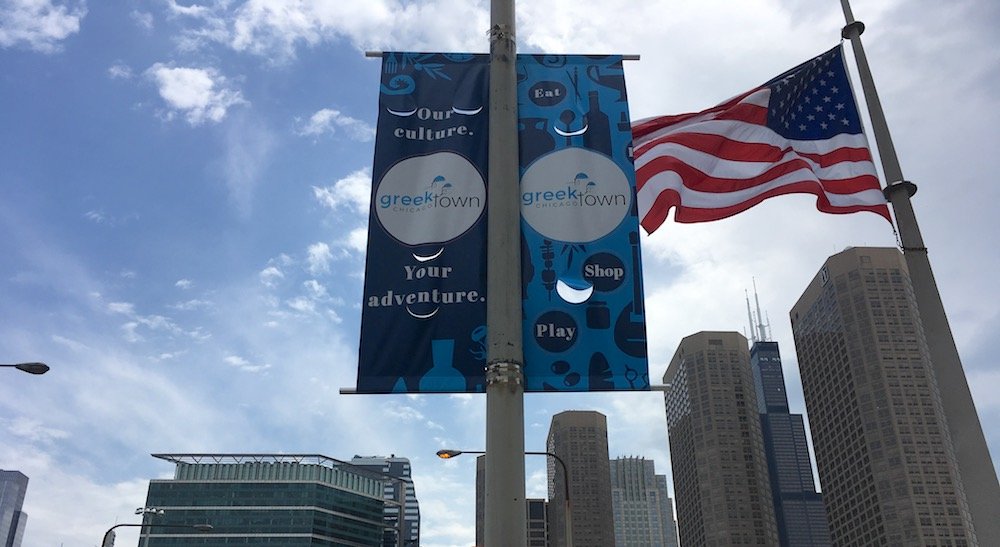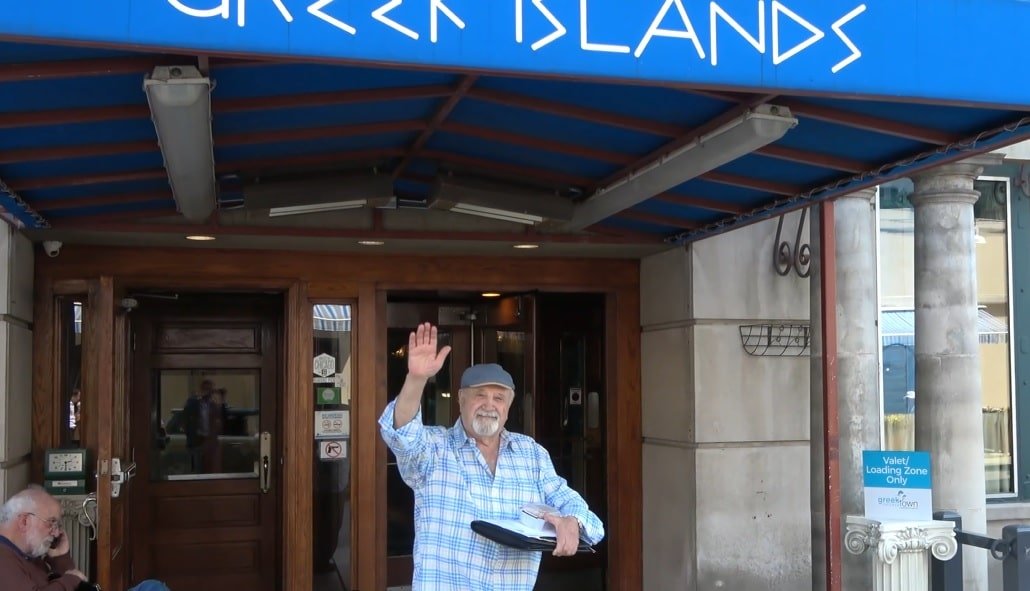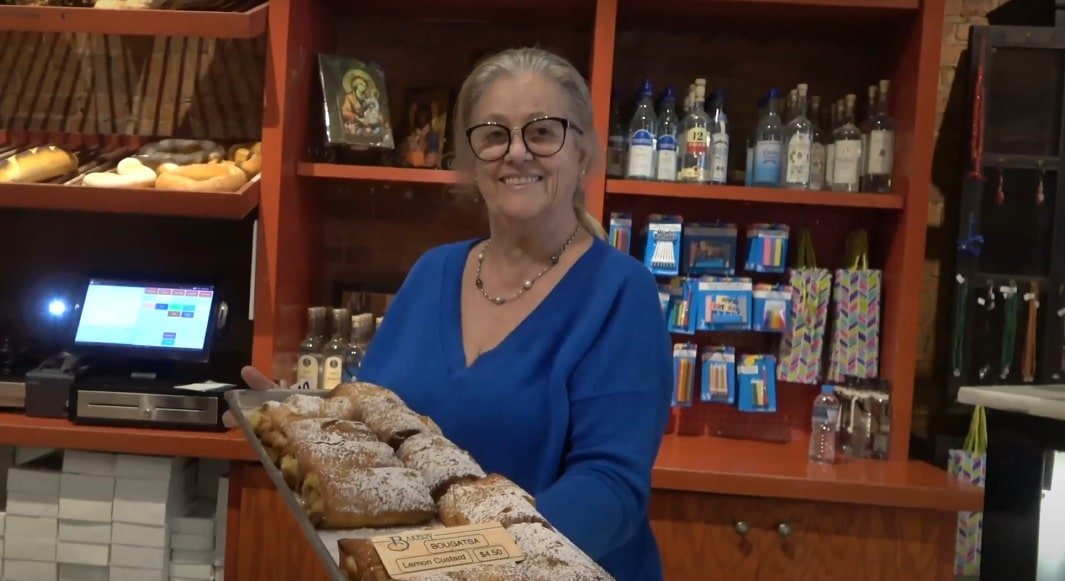
Chicago’s Greektown, the dining and nightlife district on the city’s Near West Side, is the undisputed cultural hub for the third-largest population of Greeks living in the USA.
Greektown’s bars and restaurants, serving some of the best Greek food in the country, lie roughly between Van Buren and Madison Streets, along Halsted Street, west of the Loop.
It is estimated that approximately 150,000 people of Greek ancestry live in the greater Chicagoland area. The language is still heard in the neighborhood, and the community comes out in full ethnic pride during the annual Greek Independence Day parade, the “Taste of Greece” festival and the days surrounding Greek Easter.
The National Hellenic Museum, the renowned center for Greek-American history, is also located in the area.
Konstantinos Koutsogiorgas, the owner of the “Greek Islands” restaurant, which opened in 1971, says that Greektown is becoming Chicago’s new “hot neighborhood.”

“We began in a small place where we had about thirty loyal customers a day. We gradually grew, moved into a bigger place, and now we serve about 1,000 customers each day,” Koutsogiorgas says with justifiable pride.
From Chicago’s Greektown to Greece
“My body is here in Chicago, but by soul, my mind is in Greece,” he told the Greek Reporter in an interview.
The first Greeks in Chicago arrived as ship captains in the 1840s. After deciding to settle down on land, they started out working as food peddlers and, by a natural progression, soon became restaurant owners.
Around the turn of the century, the Greek population was concentrated around the Harrison, Blue Island and Halsted areas, originally known as the as Deltaîbut, later re-named “Greektown.” Back then it was where the entire Greek community lived, where its doctors, lawyers, and traders were based.
During the 1960s, Greektown was displaced by the Eisenhower Expressway and the University of Illinois at Chicago, forcing residents and businesses to move north a few blocks. Most Greeks at that time also were rising into the middle class and moving out to the suburbs. But their businesses, especially in the food industry, remained rooted in Greektown.

“Second and third generation Greeks of Chicago have actually spread out of the city”, says Maria Melidis, owner of “Artopolis,” a Greek delicatessen which opened in the year 2000.
The Greek staple food, the gyro, as well as saganaki (fried cheese, presented flambé style at the table) were first introduced to the US in Chicago’s Greektown in 1968. Most of the restaurants and businesses now in operation there were opened from 1970 to 1990, and the “Taste of Greece” summer festival became a tradition.
John Theoharis, proprietor of the bar called “9 Muses,” says that his business “has become an institution in Chicago. It’s a place where many generations of Greeks have come, they met, they got married.”
His son, Stathis Theoharis, a bartender, is “carrying on the the legacy of Greektown”, says his father, who adds that the younger generation of Greeks are turning once again toward their Greek culture.
“They want to support Greek businesses. They come over, they dance traditional Greek dances such as the Kalamatianos, they dance on the bars. Little by little, they turn towards the Greek culture,” he explains.
“Their roots are here. Knowing that they have a place where you are not completely Americanized, Ground Zero is here,” Theoharis adds.
 RSS Feed
RSS Feed















 September 22nd, 2021
September 22nd, 2021  Awake Goy
Awake Goy 
 Posted in
Posted in  Tags:
Tags: 













